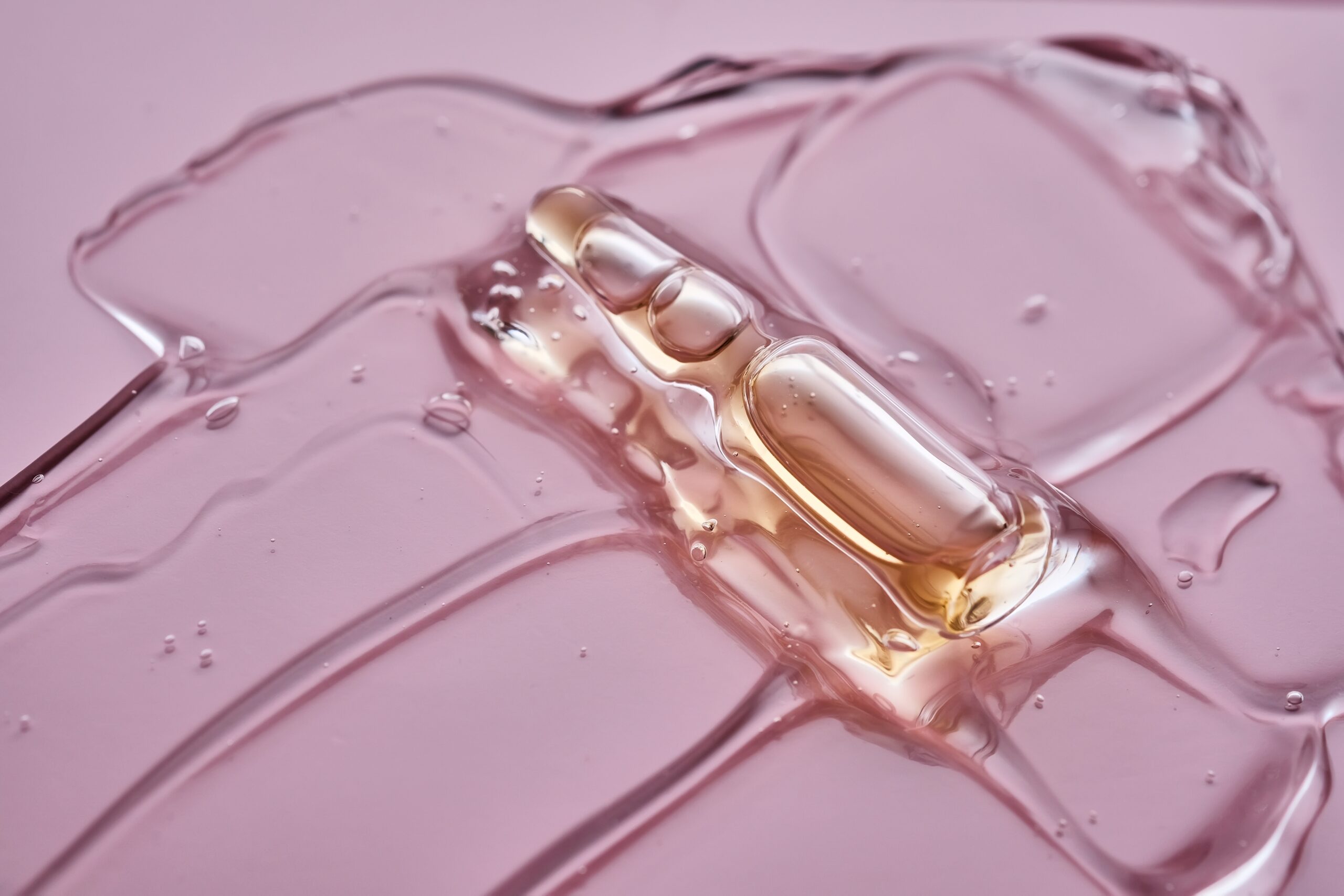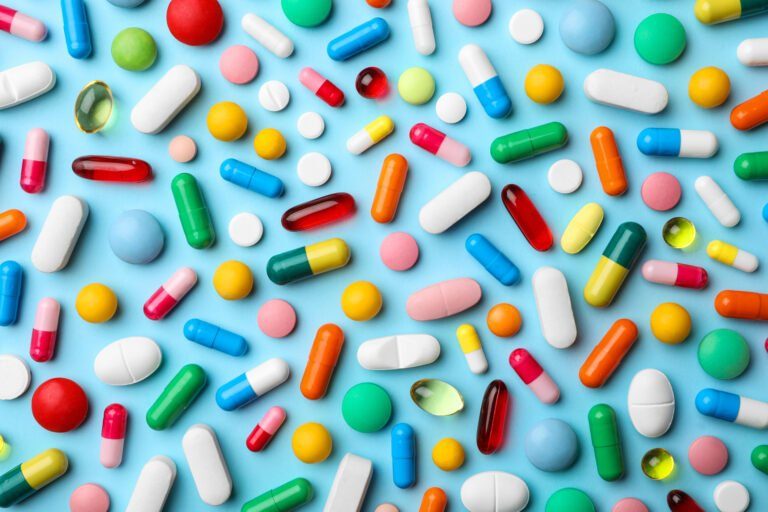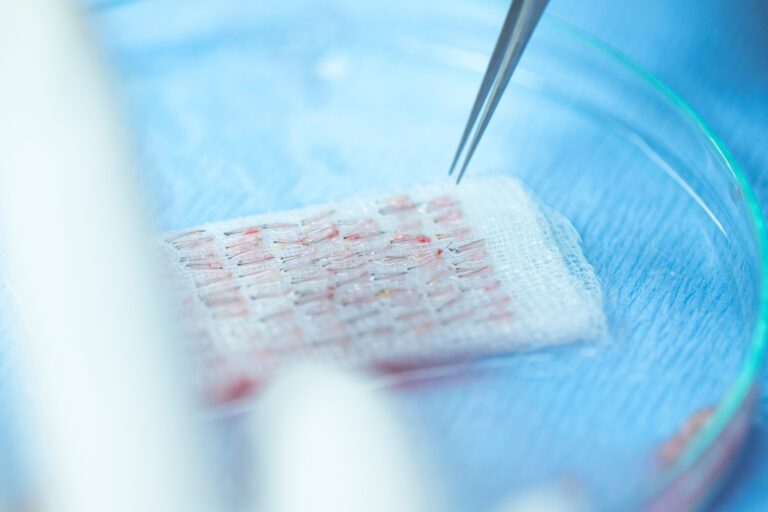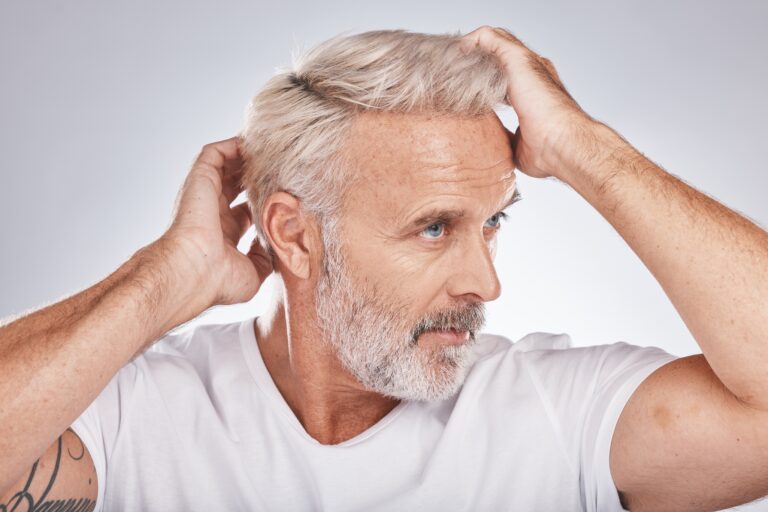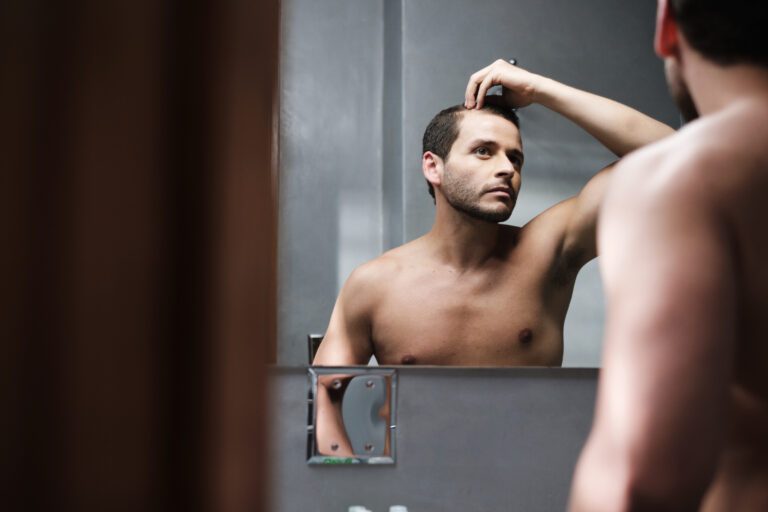Can You Use Topical Steroids for Hair Growth?
Topical treatments for hair growth have come a long way. We now have minoxidil and finasteride. Some even say caffeine can be surprisingly effective.
Well, we’re here to cover the unsung heroes: Topical steroids. Although they’re not made for that purpose, using topical steroids for hair growth can offer surprising results. Let’s see a few examples.
What Are Topical Steroids?
We know steroids don’t have the best reputation. You’ve probably heard how they can cause long-lasting damage to your heart and liver.
That’s not the type of steroids we’re covering today, though. You’re thinking of anabolic steroids, which athletes consume to build muscle tissue.
We’re focusing on topical steroids: These are medications that you can apply to your skin to deal with inflammation and irritation. They’re mostly used to treat eczema, dandruff, and psoriasis.
What does this have to do with hair growth? Well, studies have shown that these topical steroids can promote healthy hair growth. How? Let’s find out!
How Can Topical Steroids Promote Hair Growth?
Before we cover the effectiveness of topical steroids in promoting hair growth, it’s worth noting that they can’t treat all types of hair loss.
For instance, they’re pretty useless against male pattern baldness or female pattern hair loss. The most common type of hair loss topical steroids can treat is alopecia areata (AA). Why?
Well, alopecia areata occurs when your immune system targets your hair follicles for a series of attacks, causing inflammation that prompts hair loss.
As we’ve already established, topical steroids are anti-inflammatory medications. They can treat that hair-weakening inflammation, prompting a quick recovery and healthy hair growth.
Don’t believe us? Maybe you’ll believe this 2010 study. It compared the effectiveness of topical steroids in treating alopecia areata to topical tretinoin, dithranol paste, and white petrolatum jelly.
Researchers divided 80 patients into four groups, and each one had to take a different treatment. The topical steroids group showed the best results, with 70% of its members responding positively to the treatment.
So, why can’t topical steroids treat androgenetic alopecia (AGA)? Because it’s a hormone-induced disease. It occurs when high levels of DHT causes your hair strands to grow weaker and thinner.
Topical steroids can’t deal with these hormone-related issues, so AGA is outside their specialty.
Can Topical Steroids Treat Hair Loss in the Scalp?
Yes, alopecia areata is mostly associated with beard and eyebrow hair loss. That doesn’t mean it doesn’t target the scalp, though, and it usually does.
So, don’t be afraid to apply topical steroids if you experience excessive hair loss on the scalp. Just make sure it’s actually alopecia areata and not something else.
That’s not the only way these treatments can prevent hair loss. Ever heard of seborrheic dermatitis? It’s an infamous skin condition that often targets the scalp.
It doesn’t cause hair loss directly, but it can prompt excessive itching. That can damage your hair follicles, resulting in hair loss.
Topical steroids can help with that. You see, seborrheic dermatitis is an inflammatory disease. So, it shouldn’t be too hard for topical steroids to deal with it.
In fact, a 2014 study tested how effective they are in treating it compared to calcineurin inhibitors and lithium salts.
Topical steroids offered impressive results, clearing out the symptoms of seborrheic dermatitis in 4-12 weeks.
What Are the Most Common Topical Steroids?
There are various topical steroids on the market, and each has something different to offer.
1. Clobetasol Propionate
Clobetasol propionate is one of the least painful, most potent treatments on this list. Numerous studies have confirmed its effectiveness in treating alopecia areata, especially in children.
A 2023 study compared clobetasol propionate cream 0.05% to bimatoprost 0.01% in treating alopecia areata.
Researchers divided patients into two groups and assigned one of the treatments to each one.
After 12 weeks, they noticed more members of the clobetasol group experienced acceptable hair growth than the bimatoprost group. With Clobetasol Propionate, you know you’ll get your money’s worth.
2. Mometasone Furoate
Mometasone furoate may not be the most effective treatment on this list, but it’ll always offer impressive results.
In 2015, researchers put mometasone furoate 1% cream against bimatoprost 0.03% solution to determine which is more effective in treating alopecia areata.
They divided the subjects into two groups and assigned a treatment to each one. Although bimatoprost showed more promising results, mometasone patients still exhibited significant hair growth. So you better believe it’ll deliver.
Note: Most patients applying mometasone to treat eczema or fungal infections use it for a short time. As such, you might have to use it a bit longer if you’re treating hair loss.
3. Betamethasone Valerate
Betamethasone valerate is another potent topical treatment that’s mostly used to deal with scalp psoriasis. However, it’s shown impressive results in treating alopecia areata.
A 2011 study examined how effective betamethasone is in treating AA compared to intralesional triamcinolone acetonide and tacrolimus ointment.
Researchers divided 78 patients into three groups, and each applied a different treatment.
After 12 weeks, they noticed the betamethasone group had the second-best results in the trial, with 53.8% of the members showing significant hair regrowth.
4. Triamcinolone Acetonide
Triamcinolone acetonide is one of those straightforward topical treatments that will give you good results quickly. You can ask the subject of the following 2020 study:
A 28-year-old male exhibited signs of beard alopecia areata for five months. After the examiners presented him with potential treatments, he went with triamcinolone acetonide cream 0.1%.
Applying the treatment twice a day, he started showing signs of hair growth after two months. His beard’s hair had fully grown after six months.
The best part? The side effects of topical triamcinolone acetonide are usually minimal. So you get excellent results with low risks.
5. Hydrocortisone Acetate
Hydrocortisone acetate is the only topical steroid on this list that you can buy over the counter. You can probably guess it’s not the most effective treatment—at least compared to its competition.
Take this 2014 study, for instance. It compared hydrocortisone 1% to clobetasol propionate cream 0.05% in treating alopecia areata.
Researchers randomly assigned the treatments to forty-two children and assessed their progress throughout 24 weeks.
Unfortunately, hydrocortisone came a bit short, as clobetasol patients experienced less hair loss. Don’t get us wrong; hydrocortisone still delivered, but its results weren’t as impressive as clobetasol.
What Are the Drawbacks of Using Topical Steroids?
Despite proving to be effective in treating alopecia areata, topical steroids still come with several drawbacks. You should know what they are before using them so you understand what you’re getting into.
Challenging Application Method
At first glance, applying a cream or a gel to your head may not sound challenging, but you’d be surprised.
Remember, you want to keep the treatment away from your hair as much as possible. So, you need to search for the bald patches and apply the steroids to them.
That can be more challenging than you think, especially if you’re doing it alone, as you don’t have a clear view of your scalp.
Long-Term Commitment
As you can tell by now, topical steroids take a long time to show any results, and not everyone can wait that long. Some patients either quit or stop applying the treatment regularly.
Combine that with the unpleasant smell, and you may not want to apply steroids on your head again.
Numerous Side Effects
Look, topical steroids are generally considered safe. That doesn’t mean they don’t come without risks—and the list is longer than you think.
Overusing them for a long time can prompt acne spots, stretch marks, and scalp eczema. If the treatment touches parts of your face too often, it can prompt red rashes.
Which Topical Steroid Should You Use?
At first glance, the answer might sound simple: “I want the best results, so I’ll use the most potent treatment.” It doesn’t work that way, though.
Each alopecia areata patient is different, and not everyone needs a high-potency treatment. Remember, the stronger the treatment, the stronger the side effects.
So, doctors can start by recommending a mild cream like hydrocortisone and see if it offers the desired results. If not, they can gradually switch to more potent steroids.
Can Topical Steroids Work With Other Treatments?
Yes, you can combine topical steroids with other medications to boost their hair-growing effects.
A 2017 study compared the effectiveness of mometasone and adapalene to mometasone alone in treating alopecia areata.
The study included 40 patients, and researchers divided them into two groups. One used mometasone alone, while the other used the mixed treatment.
They did three checkups throughout 12 weeks, and the mixed treatment showed better results in each one. So, don’t be afraid to combine medications if you want better results.
Of course, you need to consult a healthcare professional before doing that, as it might not always be the best option for you.
How to Apply Topical Steroids?
You can’t expect to enjoy the full extent of topical steroids’ effects if you don’t know how to apply them properly.
As we previously mentioned, topical treatments come in different forms, so the application method depends on the variant.
Luckily, none of the variants are hard to apply. Here’s how to do it:
Cream Steroids
Cream steroids might be the most famous variant of topical treatment. You apply them the same way you do with any other topical cream.
- Wash your hands thoroughly before touching the cream to prevent the spread of infections.
- Apply a pea-sized amount of cream to your hand and rub your fingers together.
- Find the balding patches and try to separate the hair as much as possible to avoid getting cream on it.
- Apply the cream to the balding patches and rub your scalp for a couple of minutes.
- Wash your hands to avoid getting cream all over the place.
Helpful tip: Don’t wash your hair for at least an hour after applying steroids, as that might eliminate them before they can have any effect on your scalp.
Liquid Steroids
Liquid steroids are easy to apply; fill some of that dropper with as much liquid as your doctor recommends and apply it to your scalp. You don’t have to rub your scalp like with the cream.
If you’re combining two treatments, like clobetasol and minoxidil, don’t mix them in the same bottle either. Apply them separately one after the other.
Wrapping Up
Ultimately, using topical steroids for hair growth can be an effective solution in the long run.
There are plenty of treatments on the market, so consult a healthcare professional to identify the most suitable option. Feel free to combine steroids with other treatments as well to get optimal results.

